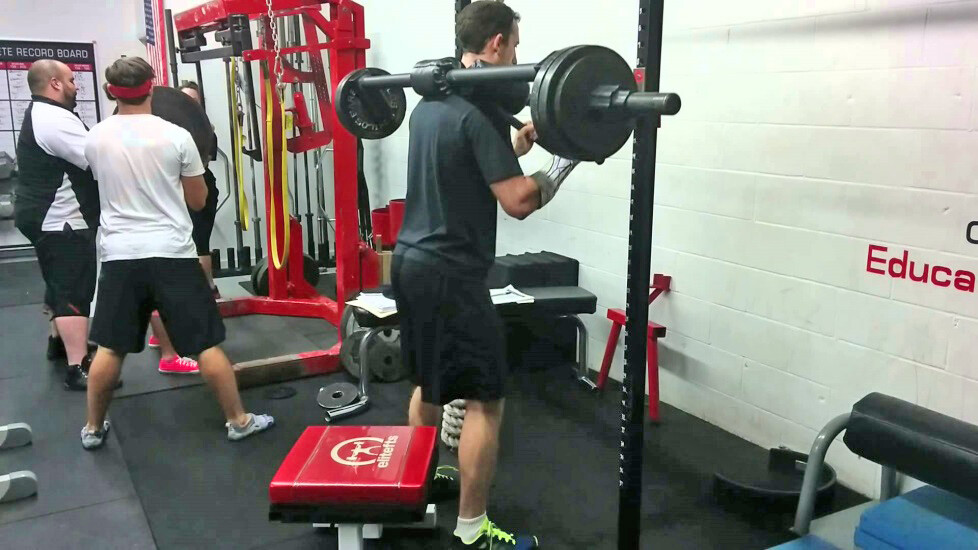 By Nunzio Signore (BA, CPT, NASM, PES, FMS)
By Nunzio Signore (BA, CPT, NASM, PES, FMS)
No one is immune from the risk of injury, especially athletes. It’s how we deal with these injuries during our recovery that allows us to continue to train effectively.
Many injuries such as fractures and concussions do require complete rest, but for most types of injuries it’s usually only for a week or two. Most athletes are extremely competitive and don’t want to hear about completely “shutting it down”. I think meeting halfway between the doctor’s “don’t do anything” and the athlete’s “I don’t want to stop playing” can be accomplished by focusing on what can be done during training sessions while injured, instead of what can’t be done.
This can be accomplished by training your healthy side. Training the uninjured side will prevent strength losses to both sides, so that there is less ground to make up after getting cleared to play. It will also help keep the athlete strong not only physically, but mentally as well. Oh, and get this… it will also significantly improve the strength of your injured side.

Let me explain.
This phenomenon of training one side and also improving strength on the other is referred to as cross-education (click here for more info on this topic)
These “transferred” strength improvements are made possible by one of the wonders of nature called our “nervous system”. When the nervous system is forced to send a call for strength to one side, it “learns” how to do so for the other side as well. Strength gains of the injured limb can range anywhere between 10-75% of the healthy limb depending on certain “training variables” (too in-depth to include in this blog.)
In short, the injured side does nothing, but gets 10-75% stronger. Sound good?

In order to maximize transfer of strength to the injured side, you’ll want to slow down the eccentric phase to a 3-5 second negative (for most exercises this is the “lowering” portion of the movement), lift explosively and stay in specific set and rep ranges (3-5 sets of 3-8 repetitions). If higher rep ranges are utilized (10 or more) then then the transfer effect will be drastically reduced on the injured side.
How is this done? Let’s take Suffern hockey’s Tim Patwell. Tim broke his arm with 8 weeks left in the season. He came in and trained 3 weeks after getting his arm put in a cast. He returned three weeks later to play in the playoffs with great success.
Here’s a little bit of how we trained Tim while his arm was recovering. Tim couldn’t hold a trap bar to deadlift with, so we took the weight out of his hands.
(Bench Hip Bridges)
With the use of a safety squat bar, we were able to hit his quads …no problem!
(SSB Split Squats)
Building Lat Strength (remember transfer of strength) 1-arm DB Row.
(1-Arm DB Row)
Tim couldn’t grab the sled during sled pulls. So we used a belt.
(Rev. Sled Pulls)
And “Ab” work at its finest…
(Body Saws)
I think you get the point. Remember, being injured isn’t a death sentence. There’s always something you can do. So keep training hard. You’ll be stronger than ever in no time.
The RPP Skaters Program is a complete top to bottom off-season protocol for ages 13+. It is comprised of 8-week training programs, meeting 2x per week for a total of 16 sessions in each eight week cycle. The programs begin in March and end in September just before the start of the new high school season. Please register by clicking here if you are interested.
See You in the Gym.

